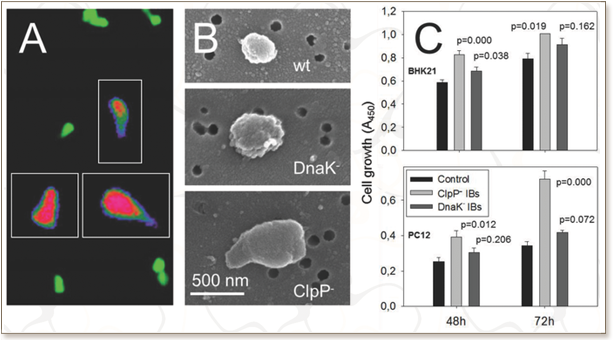
Self-assembled proteins and peptides as scaffolds for tissue regeneration
Y. Loo, M. Göktaş, A.B. Tekinay, M.O. Guler, C.A.E. Hauser, and A. Mitraki
Advanced Healthcare Materials 4 (2015) 2557-2586

Self-assembling proteins and peptides are increasingly gaining interest for potential use as scaffolds in tissue engineering applications. They self-organize from basic building blocks under mild conditions into supramolecular structures, mimicking the native extracellular matrix. Their properties can be easily tuned through changes at the sequence level. Moreover, they can be produced in sufficient quantities with chemical synthesis or recombinant technologies to allow them to address homogeneity and standardization issues required for applications. Here. recent advances in self-assembling proteins, peptides, and peptide amphiphiles that form scaffolds suitable for tissue engineering are reviewed. The focus is on a variety of motifs, ranging from minimalistic dipeptides, simplistic ultrashort aliphatic peptides, and peptide amphiphiles to large "recombinamer" proteins. Special emphasis is placed on the rational design of self-assembling motifs and biofunctionalization strategies to influence cell behavior and modulate scaffold stability. Perspectives for combination of these "bottom-up" designer strategies with traditional "top-down" biofabrication techniques for new generations of tissue engineering scaffolds are highlighted. Recent advances in self-assembling proteins, peptides, and peptide amphiphiles that form scaffolds suitable for tissue engineering are discussed. Rational design and biofunctionalization strategies for a variety of motifs ranging from minimalistic dipeptides, ultrashort aliphatic peptides, and peptide amphiphiles to large "recombinamer" proteins are reviewed and challenges and perspectives for their widespread adoption in applications are highlighted.
DOI: 10.1002/adhm.201500402

"KAUST shall be a beacon for peace, hope and reconciliation, and shall serve the people of the Kingdom and the world."
King Abdullah bin Abdulaziz Al Saud, 1924 – 2015
Thuwal 23955-6900, Kingdom of Saudi Arabia
Al-Haytham Building (Bldg. 2)
© King Abdullah University of Science and Technology. All rights reserved